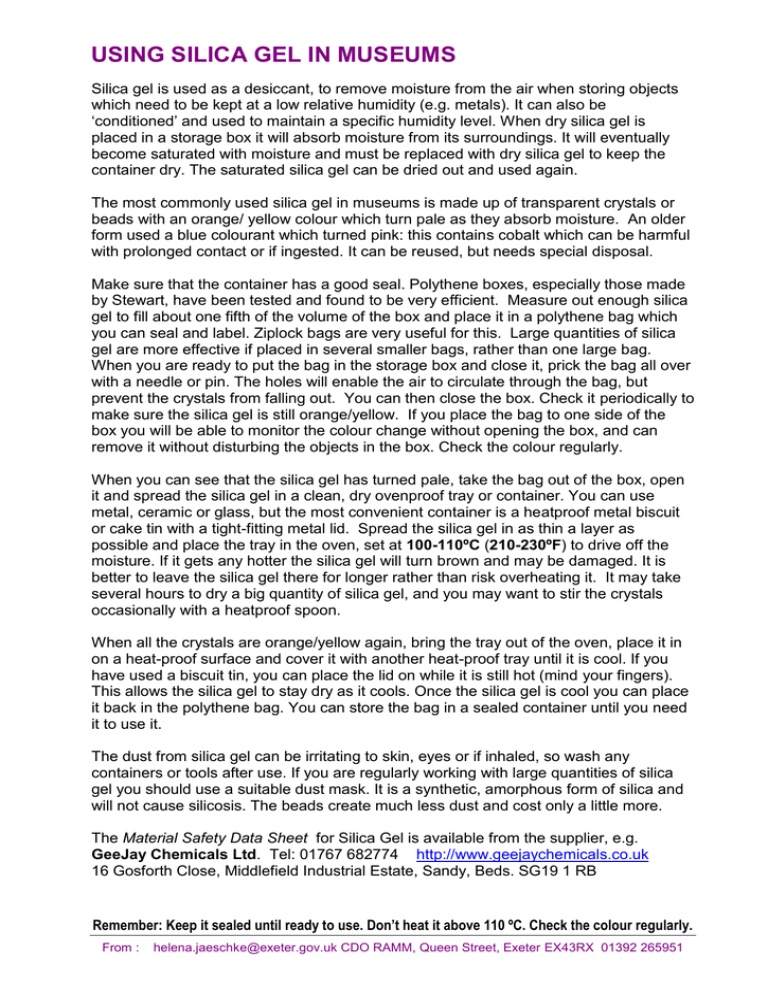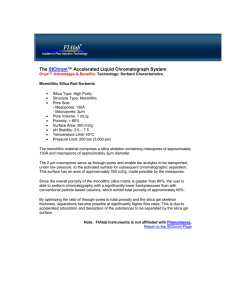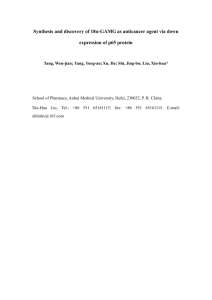Information about using silica gel in museums
advertisement

USING SILICA GEL IN MUSEUMS Silica gel is used as a desiccant, to remove moisture from the air when storing objects which need to be kept at a low relative humidity (e.g. metals). It can also be ‘conditioned’ and used to maintain a specific humidity level. When dry silica gel is placed in a storage box it will absorb moisture from its surroundings. It will eventually become saturated with moisture and must be replaced with dry silica gel to keep the container dry. The saturated silica gel can be dried out and used again. The most commonly used silica gel in museums is made up of transparent crystals or beads with an orange/ yellow colour which turn pale as they absorb moisture. An older form used a blue colourant which turned pink: this contains cobalt which can be harmful with prolonged contact or if ingested. It can be reused, but needs special disposal. Make sure that the container has a good seal. Polythene boxes, especially those made by Stewart, have been tested and found to be very efficient. Measure out enough silica gel to fill about one fifth of the volume of the box and place it in a polythene bag which you can seal and label. Ziplock bags are very useful for this. Large quantities of silica gel are more effective if placed in several smaller bags, rather than one large bag. When you are ready to put the bag in the storage box and close it, prick the bag all over with a needle or pin. The holes will enable the air to circulate through the bag, but prevent the crystals from falling out. You can then close the box. Check it periodically to make sure the silica gel is still orange/yellow. If you place the bag to one side of the box you will be able to monitor the colour change without opening the box, and can remove it without disturbing the objects in the box. Check the colour regularly. When you can see that the silica gel has turned pale, take the bag out of the box, open it and spread the silica gel in a clean, dry ovenproof tray or container. You can use metal, ceramic or glass, but the most convenient container is a heatproof metal biscuit or cake tin with a tight-fitting metal lid. Spread the silica gel in as thin a layer as possible and place the tray in the oven, set at 100-110ºC (210-230ºF) to drive off the moisture. If it gets any hotter the silica gel will turn brown and may be damaged. It is better to leave the silica gel there for longer rather than risk overheating it. It may take several hours to dry a big quantity of silica gel, and you may want to stir the crystals occasionally with a heatproof spoon. When all the crystals are orange/yellow again, bring the tray out of the oven, place it in on a heat-proof surface and cover it with another heat-proof tray until it is cool. If you have used a biscuit tin, you can place the lid on while it is still hot (mind your fingers). This allows the silica gel to stay dry as it cools. Once the silica gel is cool you can place it back in the polythene bag. You can store the bag in a sealed container until you need it to use it. The dust from silica gel can be irritating to skin, eyes or if inhaled, so wash any containers or tools after use. If you are regularly working with large quantities of silica gel you should use a suitable dust mask. It is a synthetic, amorphous form of silica and will not cause silicosis. The beads create much less dust and cost only a little more. The Material Safety Data Sheet for Silica Gel is available from the supplier, e.g. GeeJay Chemicals Ltd. Tel: 01767 682774 http://www.geejaychemicals.co.uk 16 Gosforth Close, Middlefield Industrial Estate, Sandy, Beds. SG19 1 RB Remember: Keep it sealed until ready to use. Don’t heat it above 110 ºC. Check the colour regularly. From : helena.jaeschke@exeter.gov.uk CDO RAMM, Queen Street, Exeter EX43RX 01392 265951



